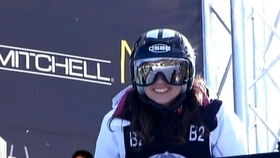Content:
Fishing is a beloved pastime for many, offering both relaxation and the thrill of catching a big catch. However, for those who frequent freshwater bodies, there is a lurking danger that can turn a day of fishing into a health nightmare: schistosomiasis, commonly known as blood fluke disease. This parasitic infection is transmitted through contact with contaminated water, often found in freshwater environments where certain snails carry the parasites. As an angler, it's crucial to know how to fish safely and prevent exposure to this disease. Here are some essential tips to help you enjoy your fishing adventures while keeping schistosomiasis at bay.
Understanding the Risk
Before diving into the water, it's important to understand the risk factors associated with schistosomiasis. The disease is most prevalent in tropical and subtropical regions, particularly in areas with poor sanitation and inadequate water treatment. Infection occurs when an individual comes into contact with water contaminated with the eggs of the schistosome parasite, which are released by infected snails. These eggs can survive in water for days, making it essential for anglers to be vigilant.
Precautionary Measures
Water Source Selection: Choose your fishing spots carefully. Avoid bodies of water that are known to be contaminated with schistosomiasis. If you're unsure about the water quality, it's better to be cautious and opt for a different location.
Boating and Personal Hygiene: If you're boating, ensure that you avoid swimming or wading in the water. Always wash your hands thoroughly after handling fishing gear or touching the water. Use hand sanitizer if soap and water are not available.
Protective Gear: Wear protective clothing, such as long-sleeved shirts and pants, when fishing in areas where schistosomiasis is a concern. This will minimize direct contact with the water.
Fishing Techniques
Dry Fly Fishing: This technique involves using a fly that imitates an insect that is not in the water. By staying above the water surface, you reduce the risk of contact with contaminated water.
Topwater Fishing: Similar to dry fly fishing, topwater lures create a disturbance on the water's surface, allowing you to fish without submerging your bait or lure.

Fishing from a Boat: If possible, fish from a boat. This keeps you at a distance from the water, reducing the risk of exposure. Ensure that the boat is well-ventilated to prevent any potential inhalation of water droplets.
Use of Lures: When using lures, try to keep them on the surface or just below it. This minimizes the time your lure spends in the water, reducing the risk of picking up parasites.
Post-Fishing Hygiene
Rinse and Dry: After fishing, rinse your skin with clean water to remove any potential parasites. Dry off thoroughly, especially in areas where clothing might not cover.
Wash Fishing Gear: Clean and disinfect your fishing gear, including rods, reels, and tackle. This can be done using a solution of household bleach and water, or by using commercial disinfectants designed for outdoor gear.
Health Monitoring: Pay close attention to any symptoms of schistosomiasis, such as fever, chills, abdominal pain, or a skin rash. If you suspect you have been exposed, seek medical attention promptly.
Education and Awareness
Stay Informed: Keep up-to-date with information about schistosomiasis in your area. Local health departments and fishing clubs can provide valuable information.
Share Knowledge: Educate fellow anglers about the risks and prevention methods. The more people who are aware, the safer the fishing community will be.
By following these tips, you can enjoy your fishing trips while minimizing the risk of schistosomiasis. Remember, the key is to be proactive and cautious, ensuring that your love for fishing doesn't lead to a health crisis. With the right precautions, you can continue to pursue your passion for fishing with peace of mind.












